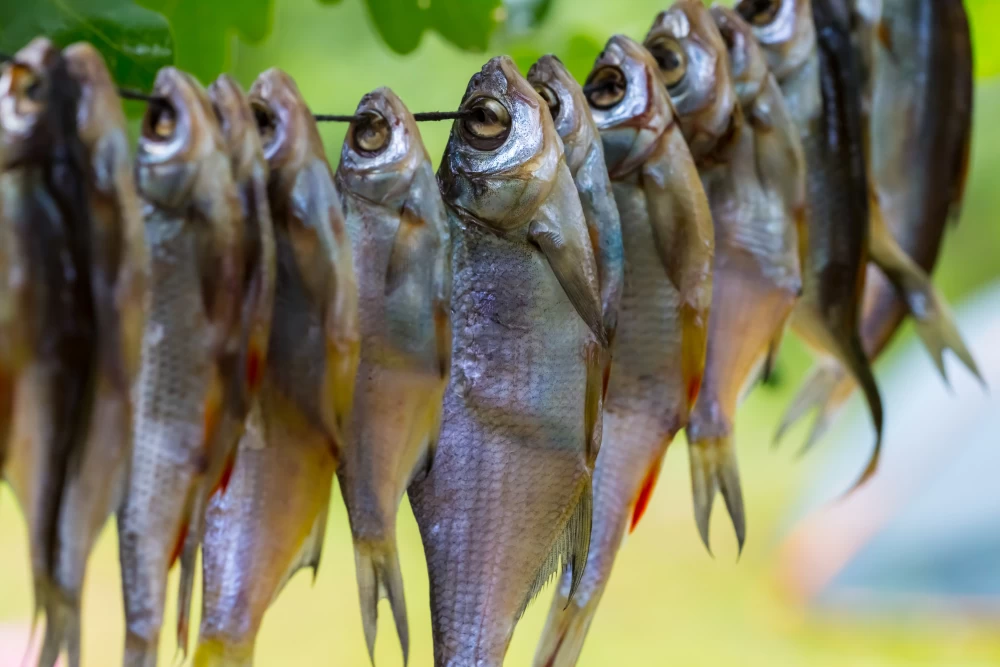Dose Dry Fish Is Rich in Protein? The Truth Behind Its Nutritional Power
Dose dry fish is rich in protein? This question has gained attention in the health and nutrition world as researchers, nutritionists, and traditional food advocates revisit the incredible nutritional profile of dried fish. Recent studies involving Bluefin Trevally (Paarai) and Sardine (Mathhi) reveal that when these fish varieties are subjected to solar drying and grinding, they transform into a concentrated protein powerhouse with a broad spectrum of essential nutrients.
Both fish varieties, selected for their naturally high protein content, were processed into powder using solar drying methods. The result was a fine, nutrient-rich powder that not only retained its original protein content but also showed a noticeable increase when compared to the raw fish. This technique preserves the core nutrients while increasing the food’s shelf life and portability, making it ideal for supplementing everyday diets in both urban and rural communities.
High Protein Dry Fish Powder Holds Promising Health Benefits
The nutritional analysis conducted on the dry fish powder covered protein, carbohydrates, fiber, total fat, minerals, and trace heavy metals. Among all parameters, protein stood out as the highest contributor. The final product’s protein levels ranged between 60 to 80 grams per 100 grams, depending on the fish type. This makes dry fish an effective addition for those looking to build muscle, improve immune function, or overcome protein-energy malnutrition especially in undernourished populations.

Dose dry fish is rich in protein, though. One of the standout nutrients is calcium, especially in small fish like sardines, where bones are also consumed. With up to 2000 mg of calcium per 100 grams, this form of natural calcium is beneficial for people with limited dairy intake. It’s an excellent alternative for strengthening bones and preventing conditions like osteoporosis or rickets in children.
Next comes Omega-3 fatty acids (EPA and DHA). These essential fats remain intact even after drying, which is crucial for maintaining cognitive function, reducing inflammation, and supporting brain development. For pregnant women and children during early developmental years, Omega-3s play a key role in boosting neural growth and heart health.
Iron content is another major win. Dry fish can offer around 4 to 6 mg of iron per 100 grams, which helps fight iron-deficiency anemia, especially in adolescent girls and women of reproductive age. This is a serious concern in low-resource regions, and the incorporation of iron-rich foods like dry fish could lead to meaningful change in public health outcomes.
Dose Dry Fish Is Rich in Protein? Experts Highlight Surprising Results
The product also contains a fair amount of Vitamin D, which is naturally available in oily fish like sardine and mackerel. Vitamin D is essential for calcium absorption, bone health, and boosting the body’s immunity. In communities with limited access to sunlight or dairy products, dry fish becomes a practical source of this vitamin. Also Read: Try This Way to Bring Glowing Skin :1 Natural Drink Experts Swear
Dose dry fish is rich in protein- The growing interest in dry fish powder is also driven by its potential for use in mid-day meal schemes and Anganwadi programs in India. With its long shelf life, minimal storage needs, and rich nutritional profile, dry fish powder is now being considered a practical option for child nutrition support in coastal and fish-eating communities.
Dry fish is undoubtedly a strong candidate for addressing malnutrition through traditional and natural food sources. It’s cost-effective, protein-dense, and requires minimal processing while preserving the essential nutrients. Incorporating powdered dry fish into porridge, curries, and snacks is now seen as a smart, culturally aligned way to enhance daily meals without drastically changing food habits.
Conclusion:
Dry fish, once considered old-fashioned, is now stepping into the spotlight as a protein-rich superfood. With strong nutritional density, especially in its powdered form, it is proving to be more than just a coastal delicacy it is a dietary solution with significant health potential.

